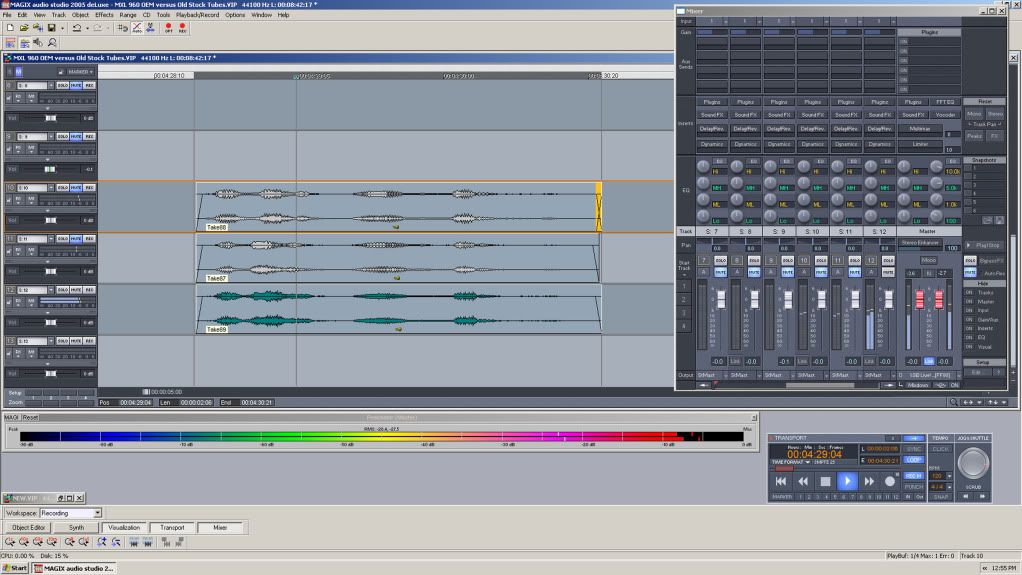T
Twinhit
You gotta speak up!
Actually...the Thursday batches are noticably "warmer" sounding, and considerd by most as THE ones to get.
It has something to do with Tuesday night happy hour in Purple Creek, Montana...and everyone being somewhat hung over on Wednesdays...so QC wasn't really paying as much attention.
Hey Twinhit...a few thoughts about swapping tubes…in mics….
Yeah, you can try out some NOS tubes...etc...but keep in mind that it's a bit more delicate than swapping tubes in an amp. The sockets in tube mics are often lightly held in place, and there are very thin, small wires connecting everything. It's easy to !#$& something up.
Also...mics are often designed with a specific tube in mind. Yeah...you can probably use various tubes in the same family, but you might find that anything but the recommended tube will not really be a pleasant character change as it might be in a guitar amp.
Finally...most decent tube manufactures at least make a point of picking better tubes (the real good manufactures take a lot of care in tube selection)...so even though you might have that NOS tube made on Thursday in Purple Creek, Montana......it actually may not be any improvement over the new production stock tube that came with the mic which was selected for the mic.
I'm not saying DON'T try out other tubes...but to make it a worthwhile effort, you at least want to know you have some "upscale" tubes to try out.
Heck...I have a few cases of tubes for my amps, rack gear and for some of my tube mics....and sometimes I can go through a dozen tubes (same brand/vintage) to find 1-2 that are really good. The others or either microphonic…… or just so-so, and might work OK as spares, but certainly not as any improvement.
Besides all that...I don't want to slam your mic choice...but there's more to it than just the tube, and the MXL 690 isn't really a high-end tube mic, so if you are looking for some silky smooth, high-end sounding tube mic tones...it's going to take a bit more than a tube swap in a MXL 690, so don’t be too disappointed if other tubes make little difference.
thanks Miroslav for your reply.
I can't say I've heard of the little old lady from purple creek. I have heard about the little old lady from Pasadena. She's the terror on Colorado Bvld.
I really don't think I have any preconcieved notions about much in this topic as I am comin' in, new to the art.
I had already swapped the tube and I noticed the wires are indeed very small and that the mic is a delecate instrument. Appreciate the warning. I may still need it though.
As far as the MXL 690, I'll take your advice steer clear of it.





